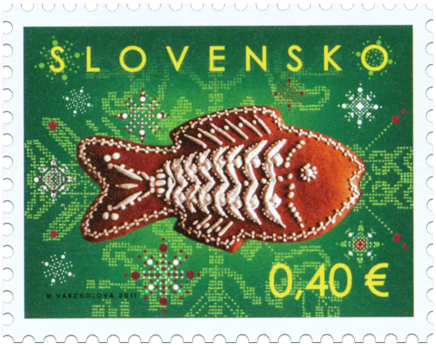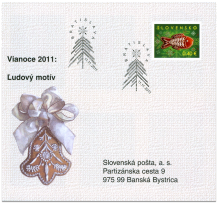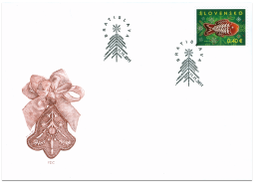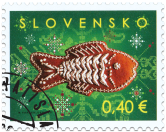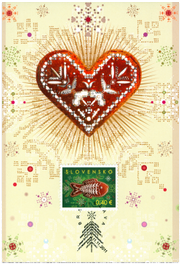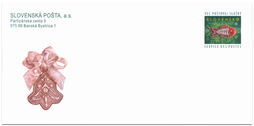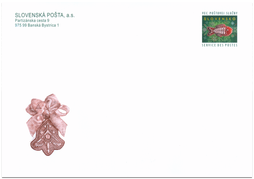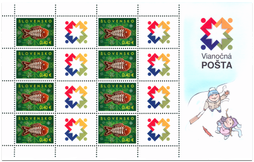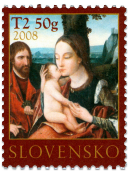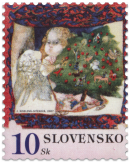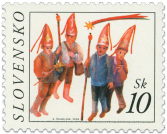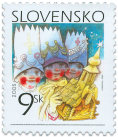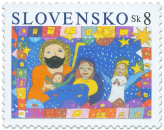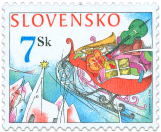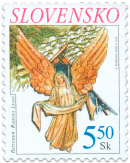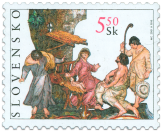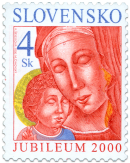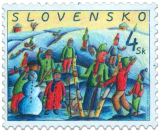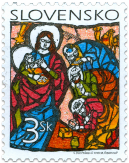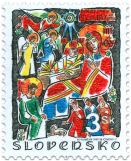506 Date of issue
11.11.2011 Face value
0.40 € Sell price
0.40 €
Christmas is a Christian feast of the incarnation and birth of Jesus Christ. Christmas season lasts from the evening worships of the feast of Nativity until the Sunday after the feast of the Epiphany (or Three Kings). This feast coincides with the traditional date of the winter solstice, which was the feast of the rebirth of the sun. Initially, only the first Christmas Day was celebrated (according to the Gregorian calendar it was December 25). Since the reformation, people began to celebrate Christmas one day in advance, on Christmas Eve (December 24). In the Orthodox Church, Christmas is celebrated according to the Julian calendar – on 7. January.
The Slovak word “Vianoce” may be associated with the German Weihnachten (Consecrated night) or Italian via (di)nozze, which literally means “honeymoon”, since the birth of Jesus occurred on the way to Bethlehem.
The custom of giving gifts at Christmas is documented in a Protestant environment from the 16th century. In Catholic families, however, the gifts were given already on the feast of St. Nicholas. Other Christmas traditions and symbols include a Christmas play (from the 11th century), making of Christmas cribs (from the 13th century), and an Advent wreath and decorated Christmas tree (from the 19th century). A well-known paradise tree, which was originally a tree in the centre of the stage decorated by fruit, later became a symbol of Christmas. Lit candles on the Christmas tree symbolize the light that came into the world to put the darkness out. The arrival of the Saviour is traditionally celebrated as a rich feast, which ends the period of fasting. According to the advice given by the housewives from the 19th century “one should eat meat that is legless, for Christ's birth it should be meat of the two-legged animals and on St. Stephen’s Day meat of the four-legged animals. It should be fish, bird, domestic or wild animal. One meat should be fried, the second should be baked and the third should be cooked or stewed.” The Christmas period is also characterized by baking small sweet-smelling cookies, cake called vianočka (Christmas cake), makovník (poppy seed cake), nut cakes and medovník (honey cake). This year’s Christmas issue is dedicated to traditional Slovak honey cake bakery, on the postage stamp is depicted a fish and on FDC a bell with a ribbon.
Tatiana Podolinská
The stamps are with cinnamon perfume.
Similar products
433 Date of issue
13.11.2008
411 Date of issue
14.11.2007
387 Date of issue
10.11.2006
366 Date of issue
16.11.2005
337 Date of issue
05.11.2004
310 Date of issue
30.10.2003
276 Date of issue
08.11.2002
253 Date of issue
15.10.2001
219 Date of issue
05.10.2000
194 Date of issue
03.11.1999
167 Date of issue
03.11.1998
137 Date of issue
03.11.1997
© 2024 POFIS - Postal philatelic service. All rights reserved

